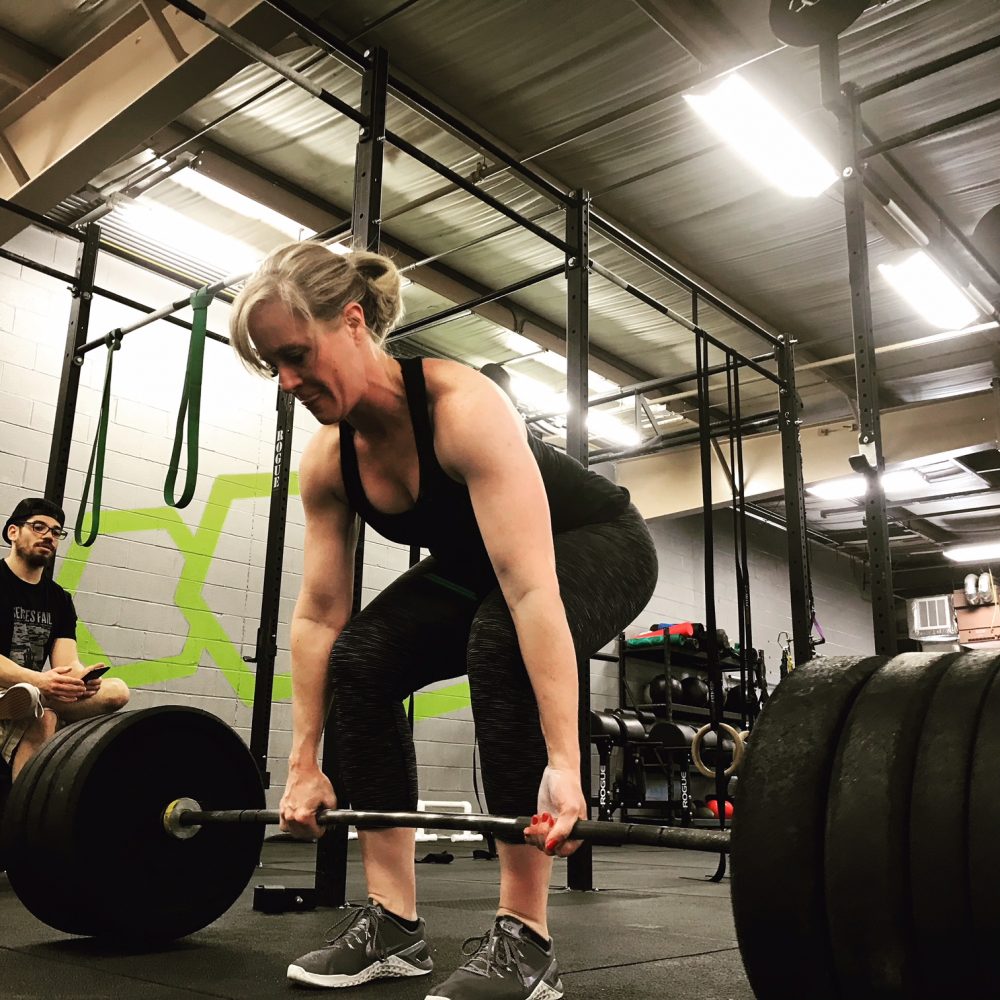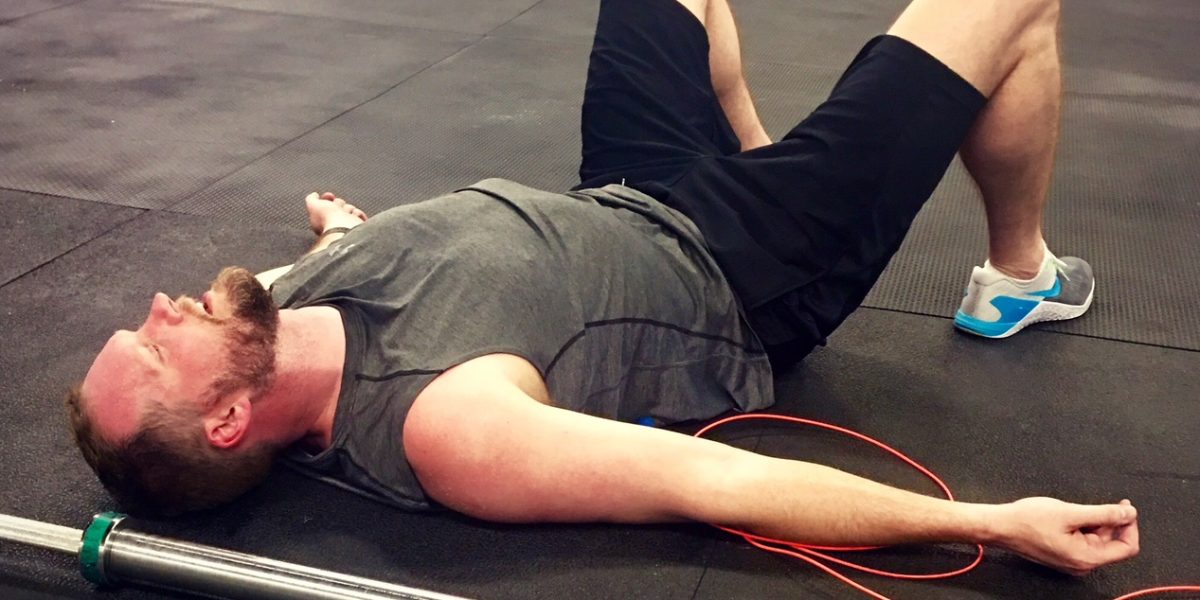What is EPOC?
When you exercise, your metabolism flares up like a roaring bonfire. But once those brilliant flames have faded, you still have smoldering embers throwing off heat and keeping you toasty. Your metabolism actually works like that too. After an intense workout is done blazing through calories, you can still have a slow burn for many hours later! This is called EPOC! What is EPOC, and how can it help you? Read on to find out.
Your standard metabolism combines oxygen with glucose and other fuels to produce energy. Measuring that oxygen usage can tell us how many calories you are burning. After intense workouts, we can see that oxygen consumption is high for a long time after you finish exercising. This effect is called excess post-exercise oxygen consumption, or EPOC. But why do you continue burning calories even after you are done exercising? Well, that’s your body recovering – repairing muscle, replenishing energy stores, and getting rid of the waste products from exercise.
If you want to maximize your workouts for fat-burning and weight loss, it is important to understand EPOC and how you can use it. Here are five things you should know about EPOC and how it can help you achieve optimal levels of calorie burning from your workouts.
1. In the hours after exercise, your metabolism has a lot of clean up work to do.
The first order of business is refueling your body. That includes refilling the glycogen stored in the muscles. These are essentially long chains of glucose that the muscles keep on hand for instant energy production. You also have to refill the oxygen-storing myoglobin in your muscles. Myoglobin is similar to hemoglobin in that it stores oxygen. It releases a flood of oxygen in response to lactic acid build up in the muscle tissue. Finally, there are a lot of repairs to do. Your body has to rebuild and repair the damaged contractile elements in your muscles. And finally, your liver has to convert the lactic acid in your body back into glucose through a process called gluconeogenesis. And all this requires energy and an increase in your metabolism.
Now we are going to get into a little science here. Don’t freak out. Stay with me. Just remember a couple important things: Aerobic metabolism uses oxygen to produce energy. ANnaerobic metabolism does not use oxygen. If that’s more than you came for, just read the bold “key points.” We don’t judge you here! (Well actually, Jess has done some judging… but only in competitions.)
2. Sprinting, compound exercises, and heavy weights require anaerobic metabolism.
All of these kinds of exercise cause you to use more of the anaerobic pathway during exercise. Simply put, your lungs and bloodstream can’t deliver enough oxygen to your cells during short bursts of exercise. So these kinds of exercise utilize the anaerobic (or oxygen-free) pathways of metabolism since your muscles can’t get oxygen fast enough for aerobic metabolism.
Compound exercises provide similar stresses to your system. Compound exercises involved both the upper and lower body at the same time and include movements like burpees, wall-balls, thrusters, and deadlifts. When you are using so many different major muscle groups, you exceed your body’s ability to deliver oxygen to all of them adequately. That leads to anaerobic metabolism. Performing these lifts rapidly only heightens that beneficial effect.
The anaerobic pathway isn’t preferred by the body, as it produces less energy for each unit of fuel burned. That’s a benefit for weight loss, though. Using fat and glucose inefficiently means you burn more to produce the same work. Anaerobic metabolism also leaves more waste products to be cleaned up after the workout. So for hours after the workout, your body cleans up the waste products and damage from the exercise session. And you continue burning calories. Which is what causes EPOC after these routines.

3. High-intensity interval training (HIIT) is the most effective way to stimulate EPOC.
All of those exercises mentioned above are key components of HIIT-training WODs. High-intensity exercise like sprinting or rapid sets of squats will burn through energy stores quickly via the anaerobic pathway. This is why we can only sustain high-intensity activity for a brief period of time—we just run out of energy. HIIT works best because it burns calories rapidly and then gives you a period of rest which allows your aerobic metabolism to catch up and supply new short-term energy stores. But these short breaks aren’t enough to replenish your oxygen and energy completely. Eventually, your body will make up for this energy deficit and does so in the hours after you work out. This produces… you guessed it, EPOC!
Running can certainly produce an EPOC effect. But only if it is done at high-intensity. Long, sustained bouts of moderate-speed running allow your body to operate very efficiently. Your body ends up with efficient energy production and minimal cleanup to perform. So you burn less fat and glucose during the workout and also have less EOPC after 30 minutes of light jogging than if you’d been doing interval training. Sprints can be a very effective way to incorporate running into HIIT workouts!
4. EPOC is influenced by the intensity, not the duration of exercise.
Fitness gurus often debate the importance of low-weight vs high-weight lifting for maximizing weight loss. The truth is that it doesn’t matter whether you use high or low weights, WITH A FEW CAVEATS. You need to use at least 30% of your one-rep-max when doing “low-weight” exercise. If left to their own devices though, most people will select a weight that is around 15-20% of their max lifts. The second caveat is that each set has to be performed to the point of failure. That means you can’t do another rep with safe form and technique. Of course, higher weights will get you to that point of failure much faster.
So keep those weights above 50% of max if you want a quick workout with the same benefits. And remember, don’t hurt yourself. Failure is when you can’t lift with acceptable form. It doesn’t have to be perfect form; just reasonable. We don’t want pain, we want you to stay at a level of productive discomfort! If you want to learn more about the differences between lifting heavy vs light, check out this article.
5. The EPOC effect from a HIIT strength-training workout won’t change your body overnight.
The energy expenditure of EPOC isn’t enough to notice on any given day. Most estimates show that EPOC will burn maybe up to 10% additional calories after your workout. So if you grind out a 400 calorie workout, EPOC might lead to another 40 calories burned. That’s about half an apple. Depressing, I know. Basically what I’m saying is “Don’t think that a high-intensity EPOC workout means you can snag an ice-cream cone after the gym.”
Stick to the diet and workout with as much intensity as possible to earn fat loss and toned muscles. Think of EPOC as one more way to maximize your returns, a little extra investment in yourself with every workout.
One final thought: These EPOC benefits don’t last forever. The body is an amazing machine. And it adapts rapidly to the stresses we put upon it. As you become highly trained, your body will develop pathways that reduce the energy deficit produced by HIIT training. And that leads to less EPOC as you get into better shape. Sometimes it seems that we have to run as fast as we can just to stay in the same place! But keep grinding, stay healthy, and stay fit!


1 Comment
Comments are closed.